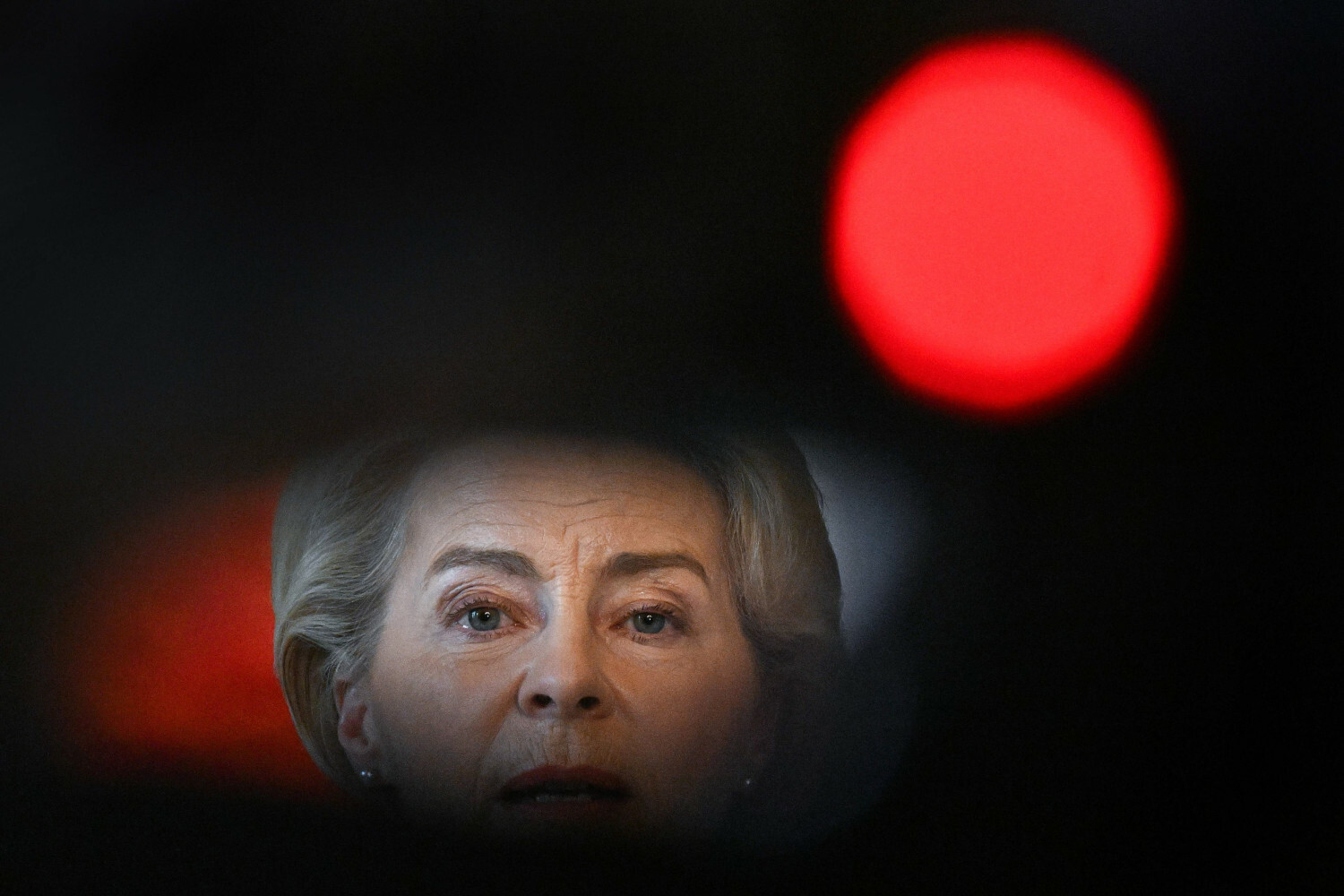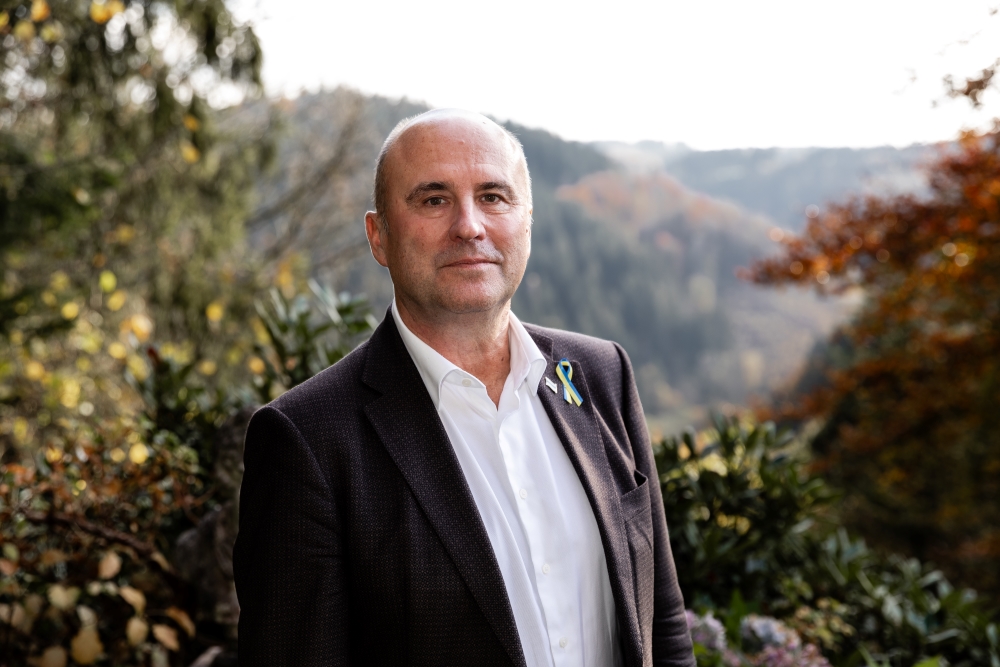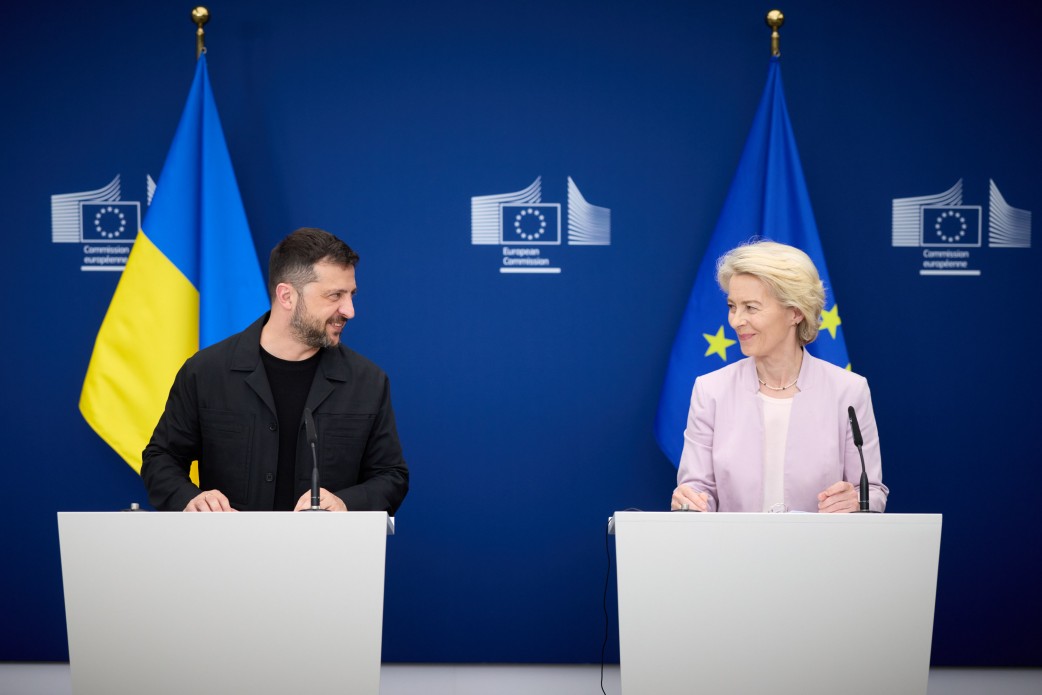Support Sestry
Even a small contribution to real journalism helps strengthen democracy. Join us, and together we will tell the world the inspiring stories of people fighting for freedom!
Together with experts in combating disinformation, Sestry analysed the most common Russian narratives found in Ukraine, Poland, Germany and Europe in general. They examined how these messages are tailored for different audiences, the platforms where Russian propaganda is most frequently encountered, how to distinguish destructive content, and whether it achieves its goals.
Constructing Reality
Propaganda always strives to construct an alternative reality and aims to make it as simple as possible, explains Doctor of Political Science and Professor at Kyiv Polytechnic Institute, Lidiia Smola:
- Let me give an example: for weeks, the idea has been spreading that Trump will prohibit the supply of weapons to Ukraine. Moreover, Trump’s extravagant statements provide grounds for various interpretations. This narrative, this framework about a ban on weapons for Ukraine, is continuously supplemented with informational messages.
This starts to destabilise society, making people think: that is it - Trump will come, and it will all end for us
The fundamental goal of Russians, continues Lidiia Smola, is to divide and demoralise:
- To demoralise the part of Ukrainian society engaged in volunteering, making them think there is no point in doing so. To demoralise those on the frontline, to sow discord with messages such as: while you are at war, those in the rear are having fun. That is, to create conflict between those fighting and those in the rear, between those who left and those still in Ukraine.
Russia is not just active, it systematically analyses all the sensitive points in Ukraine
Propaganda for Poland
When it comes to Poland, the current primary goal of Russian propaganda is to instigate fear, negative emotions and disinformation, says Director of the «Democracy and Civil Society» programme at the Institute of Public Affairs (Instytut Spraw Publicznych), Sonia Horonziak:
- This is achieved mainly through the dissemination of fake news online, styled to resemble authentic press reports. These news items predominantly concern Poland’s involvement in the war in Ukraine, the border situation, and the country’s internal affairs.
The strategic goal of Russian propaganda in Poland is to create a situation where, if not pro-Russian, at least neutral attitudes towards Russia prevail, alongside anti-American and anti-European sentiments, notes Michał Marek, head of the external threats analysis group at the National Research Institute NASK:
- Russia’s main objective is to withdraw Poland from the European Union and NATO, to ensure the absence of troops and bases of our Western partners. However, on the way to this goal, they pursue smaller objectives. For instance, they fuel anti-Ukrainian sentiments to make Poland and its government reduce support for Ukraine.
Do they succeed in this? Michał Marek believes not entirely. But where they do succeed, in his opinion, is in inflaming the issues that irritate both Ukrainians and Poles the most.
Propaganda Techniques
«Stop Supporting Ukraine» - this has been Russia’s main narrative in Germany for some time, notes Lea Frühwirth, Senior Research Fellow at the German Centre for Monitoring, Analysis and Strategy (CeMAS):
- This can be presented in various forms: claims about the danger posed by Ukrainian refugees or assertions that continued support for Ukraine threatens the German economy. We also frequently observe content suggesting that supporting Ukraine places Germans under a direct threat of war.
Typical markers of pro-Russian content focus primarily on Ukraine, crafting a particular image of the conflict to dissuade people from supporting Ukraine, continues Lea Frühwirth. Another emphasis seems to be on attacks against the current German government, aligning with Russia’s goal of gradually destabilising the situation in Ukraine.

In recent weeks, Russia has applied a tactic in Ukraine’s information space which might be labelled as «mental fatigue». The idea is that a psychologically and emotionally drained Ukrainian society might eventually accept a frozen conflict and agree to territorial losses, notes Doctor of Political Science and Professor at Kyiv Polytechnic Institute, Lidiia Smola. Russian propaganda attempts to place all responsibility solely on the Ukrainian authorities. While there are indeed many questions to be asked of them, the lack of effective communication, coupled with the absence of public and transparent discussions on significant issues, creates a space for Russian propaganda to act, the expert continues:
- And Russia focuses on this. Had the system of strategic communication at the governmental level operated effectively, had the media endeavoured not just to quickly fill the information space with provocative and manipulative headlines but aimed to inform society thoughtfully, the situation could have been different. Another issue is the credibility of so-called experts.
Nowadays, anyone can call themselves an expert, which completely undermines the notion of expertise
In Polish information space, false and fake news is most commonly disseminated online, especially on major social media platforms and far-right internet portals, says Sonia Horonziak, Director of the «Democracy and Civil Society» programme at the Institute of Public Affairs (Instytut Spraw Publicznych). Often, this information immediately provokes strong emotions, portrays the Polish government in an extremely negative light, and highlights events that adversely affect Polish society:
- Disseminated messages often combine partially truthful information or images but provide them with false context. Thus, we see an authentic photograph associated with a completely different past event.
Moreover, the role of artificial intelligence in creating increasingly sophisticated fake images or videos depicting certain events or individuals, often from the political world, is growing
From a structural perspective, disinformation campaigns such as «Twin» are well-studied and usually follow the same pattern, making them relatively easy to identify, notes Lea Frühwirth, Senior Research Fellow at CeMAS:
- For example, if a self-proclaimed news site appeared in my feed, resembling a well-known German newspaper but disseminating only overtly pro-Russian material, I would automatically become cautious.
Channels of Influence
There are several channels of fake communication in general, continues Lea Frühwirth. The first is the attempt to fill the information space with disinformation on topics of interest to Russia. However, it appears they focus more on the quantity of these messages than on their quality:
- To be manipulative, this content does not even need to contain outright lies. Simply highlighting one aspect of a problem while ignoring others, or pretending to be German citizens expressing concern while actually being part of a bot network, is also misleading. On the other hand, there are local pro-Russian influencers who repeat typical Kremlin talking points. Usually, we cannot determine their motivation - they might be paid or genuinely believe in it.
The war against Ukraine is one of the topics used daily by creators of fake news. This is detailed in a report by SCIENCE+, the largest journalistic network combating disinformation in Central Europe. In 2024, no new key disinformation narratives emerged, instead, existing ones were adapted to current events. The report records manipulations around the threat of war with Russia, societal divisions over positions on Ukraine, and the myth of a conflict between «the West» and «the East». These narratives became part of widespread attacks on democratic elections in Slovakia, Bulgaria, Moldova and Romania.
Young people are most frequently targeted by disinformation. Most do not engage with traditional media and instead obtain information from unreliable influencers. This contributes to a tendency among the youth to support radical or populist politicians.
A striking example is Romania, where the Constitutional Court annulled the results of the first round of presidential elections after President Klaus Iohannis declassified intelligence data showing that Russia had organised thousands of social media accounts to promote the radical pro-Russian politician Călin Georgescu through platforms like TikTok and Telegram. In 2025, presidential elections will be held in Poland. Russia will undoubtedly seek to exert influence, says Michał Marek, head of the external threats analysis group at the National Research Institute NASK:
- But in our current situation in Poland, the Romanian scenario is unlikely. They will not succeed in seriously influencing these elections.
Pro-Russian agents might have an impact on parliamentary elections. However, when it comes to presidential elections, I would not overestimate their ability to exert influence
Tactics, markers, and effectiveness of propaganda
Propaganda typically evokes extreme emotions, explains Sonia Horonziak, Director of the «Democracy and Civil Society» programme at the Institute of Public Affairs (Instytut Spraw Publicznych):
- You should ask yourself why you have not heard this information on public television or radio. Secondly, you should verify this information through various official sources. Most often, such information is not confirmed in any way. Some social networks also add contextual information to certain content, which can influence its perception. It is always worth searching for additional context.
Among the popular tools of Russian propaganda are aggressive rhetoric, threats, intimidation and nuclear blackmail. During the so-called year-end summary, the Russian president reiterated the claim that there are no air defence systems capable of intercepting the «Orieshnik» missile. According to Putin, even the missile defence systems in Poland and Romania would not intercept this missile. However, there is a percentage of people in Poland under the influence of Russian propaganda who might take such threats seriously and perceive other Russian narratives as real, says Michał Marek, head of the external threats analysis group at the National Research Institute NASK:
- Overall, the Polish society does not seem to fear this. It is clear that for many Poles, the war in Europe is perceived as a reality - in Europe, meaning between NATO and Russia. But the threats themselves, the «Orieshnik» topic, are not a factor widely believed by us Poles. Russians have been trying to frighten us for years - with nuclear strikes, with claims we would freeze to death without Russian gas.
So new threats are mostly viewed as just another scare tactic. The effectiveness of such Russian propaganda, frankly speaking, is not very high
Critical thinking
Anyone can fall into the trap of propaganda, says Lea Frühwirth, Senior Research Fellow at the German Centre for Monitoring, Analysis and Strategy (CeMAS):
- Human information processing is imperfect. It is not a pleasant thought, but it is the first step to awareness. We all need to establish a basic level of awareness and critical thinking. I would recommend using reliable and authoritative media outlets that adhere to journalistic standards to stay informed about what is happening in the world. Social media, on the other hand, is an information sphere where we must be prepared to encounter misleading content. If you notice something suddenly causing you excessive emotions, it is worth taking a step back and evaluating rationally to avoid contributing to the spread of fake news.

Russian propaganda typically divides the world into «black» and «white», «us» and «them», attempting to impose this division on Ukrainians. A characteristic approach is the emotional pressure - all these visualisations, publications of videos showing killed Ukrainian soldiers, notes Lidiia Smola, Doctor of Political Science and Professor at Kyiv Polytechnic Institute:
- A marker of propaganda is that you are urged to act impulsively and emotionally. For example, you go to social media and see a photo of an unfamiliar person appealing emotionally, for instance, «like this post because I am going to the frontline». And such posts then garner thousands of likes. Why? Because people want to feel part of something important. However, how these pages are used later and what is disseminated through them is rarely considered.
That is why it is crucial to critically evaluate resources and not succumb to manipulative calls for immediate action
For Ukraine, the factor of despair, constantly fuelled by hostile propagandists, is also significant. This is the narrative of an unbeatable Russia, notes Lidiia Smola:
- It works through emotional swings: from a state of sharp excitement to depression, when people write: everything is lost, we cannot win, Russia is winning. In such cases, I always ask where Russia was in 2022 with all its powerful and prepared army, and where it is now.
This project is co-funded by the Polish-American Freedom Foundation under the «Support Ukraine» programme implemented by the «Education for Democracy» Foundation




Ukrainian journalist. She worked as the Chief Editor of the Ukrainian editorial office of RFI and in the international editorial team of TSN (1+1 TV channel). She was an international correspondent in Brussels and collaborated with various Ukrainian TV channels. She also worked in the news service of Ukrainian Radio. Currently, she is involved in information and analytical projects for Ukrainian YouTube.













